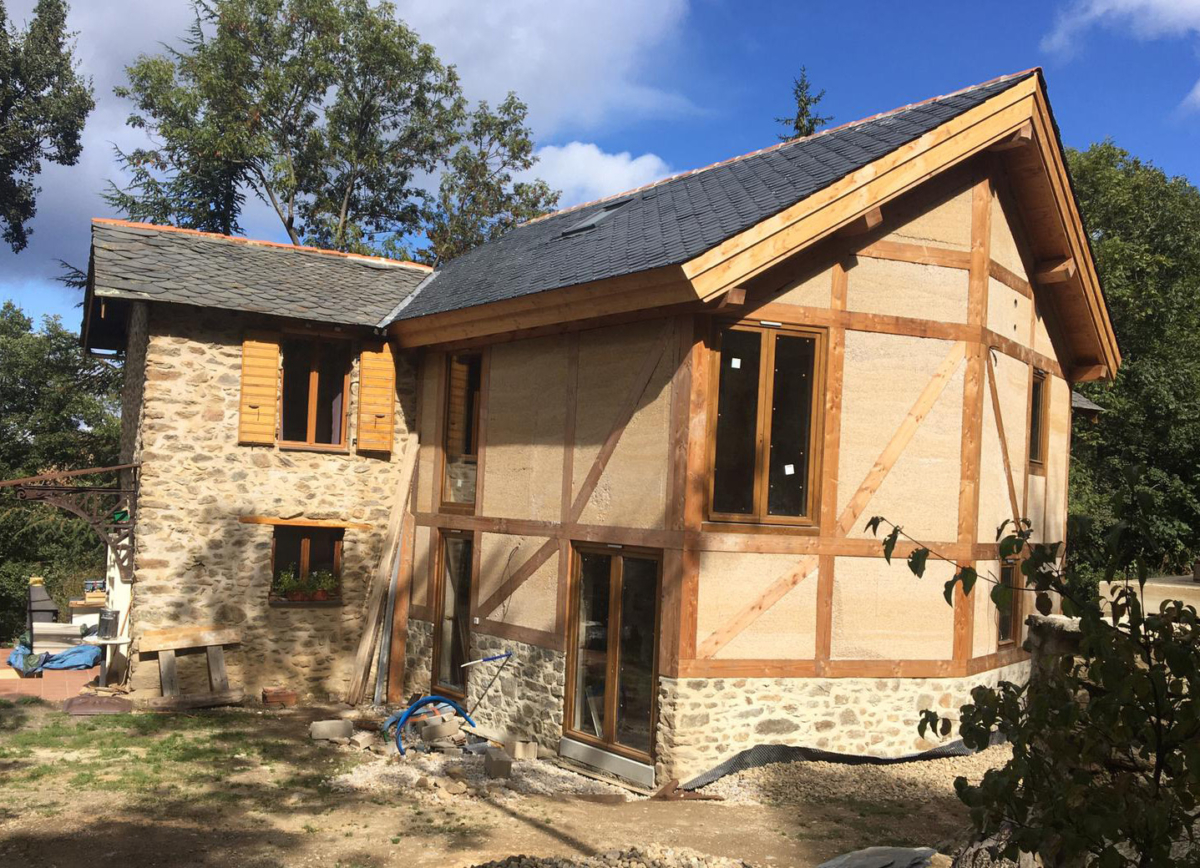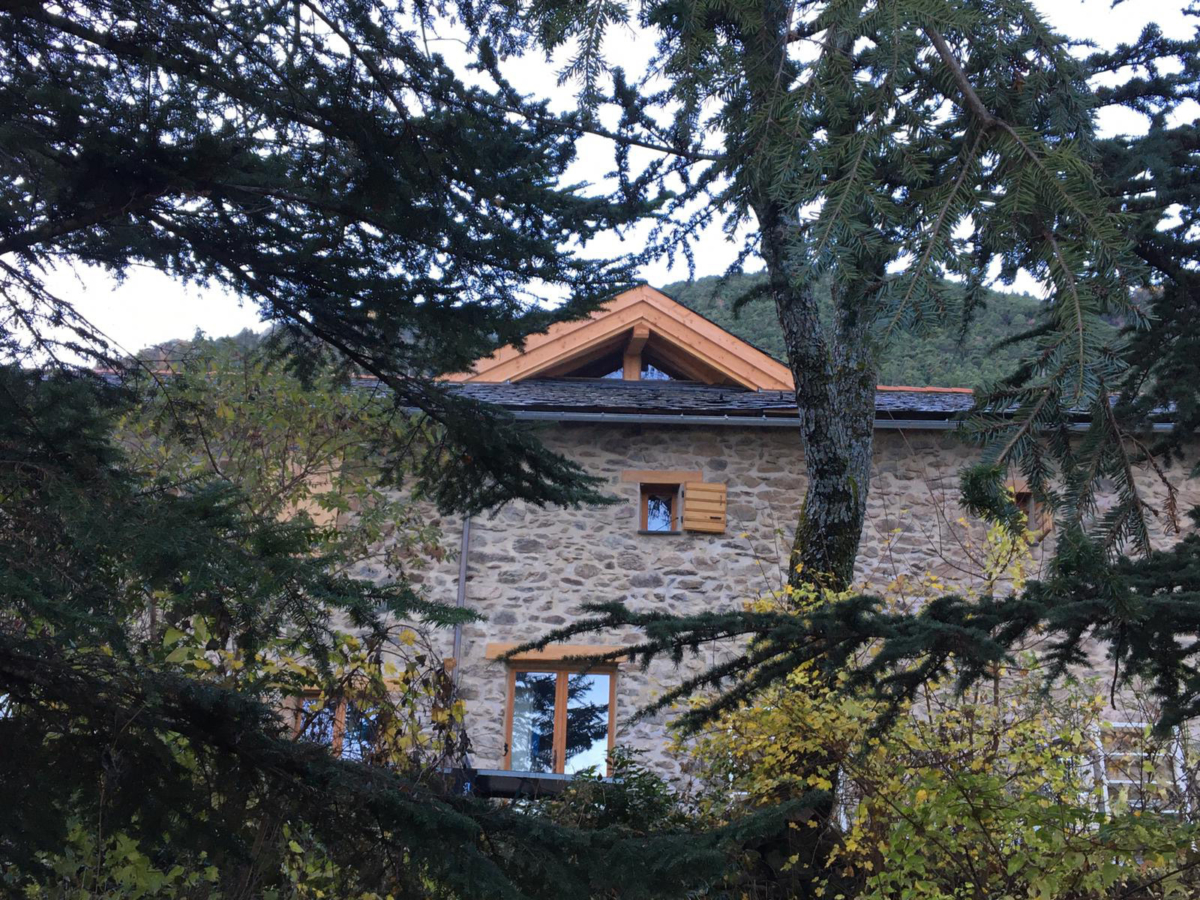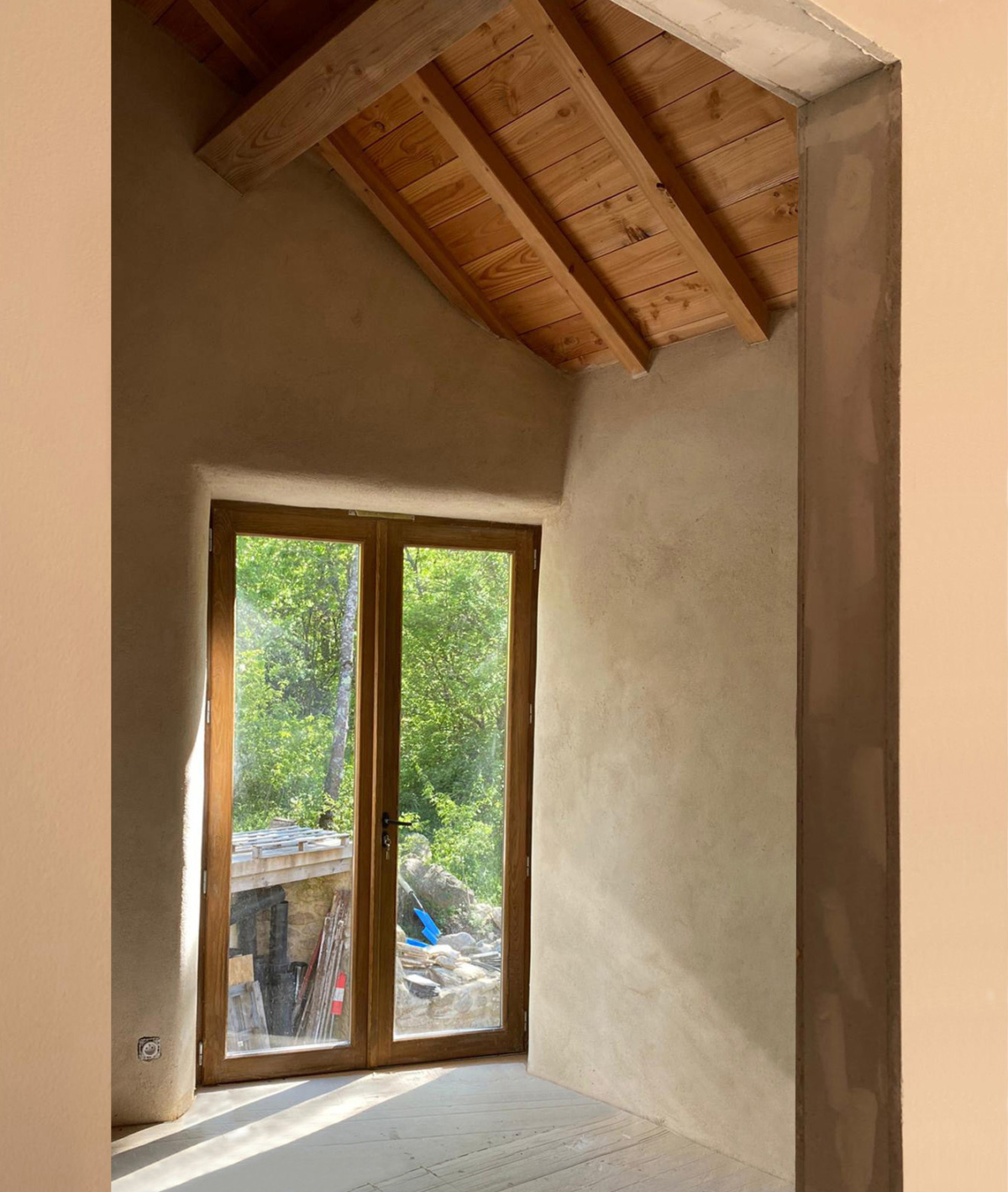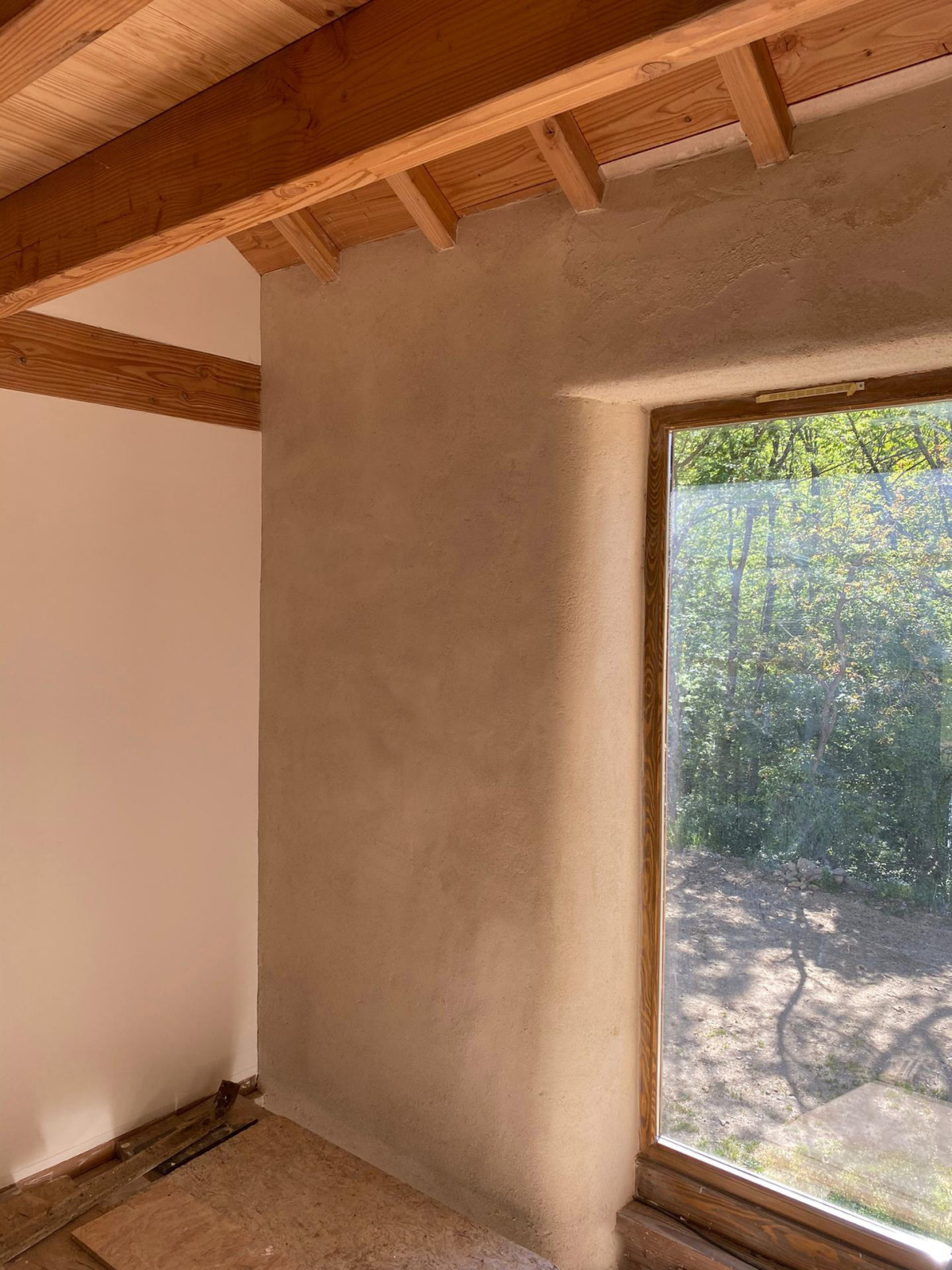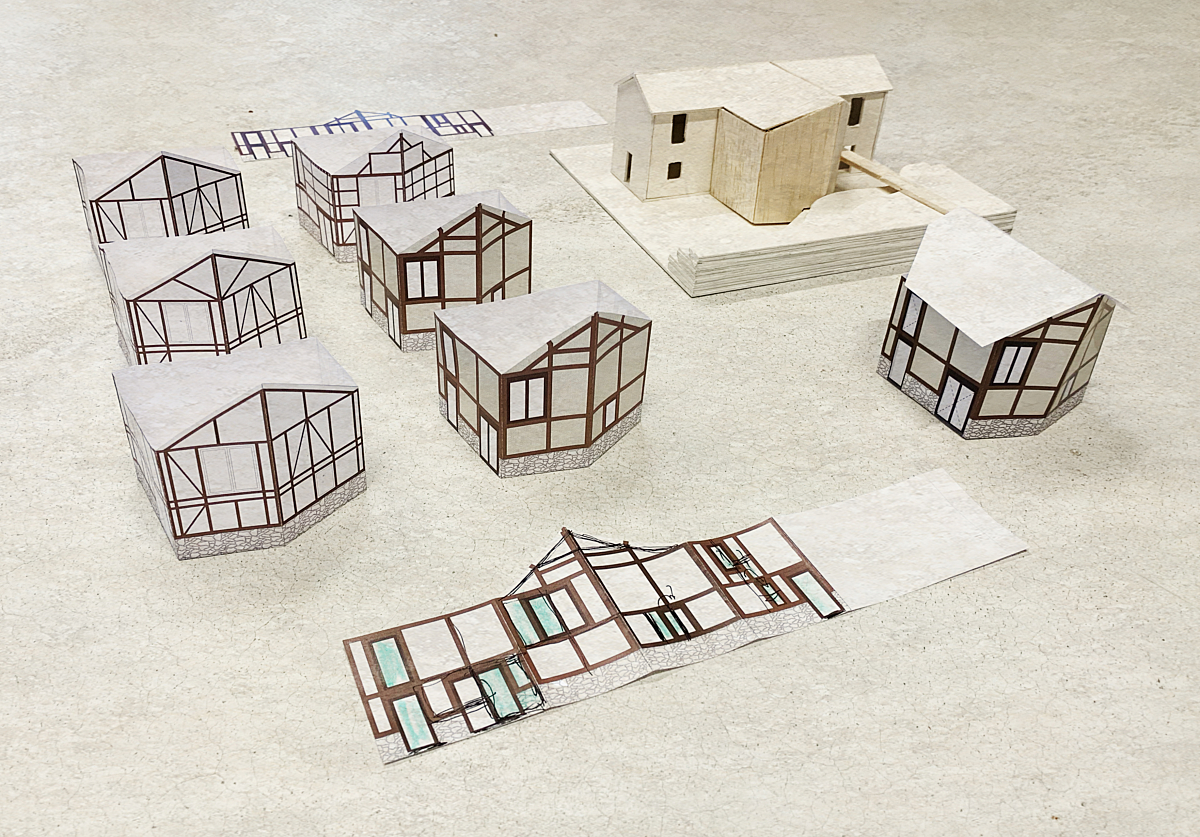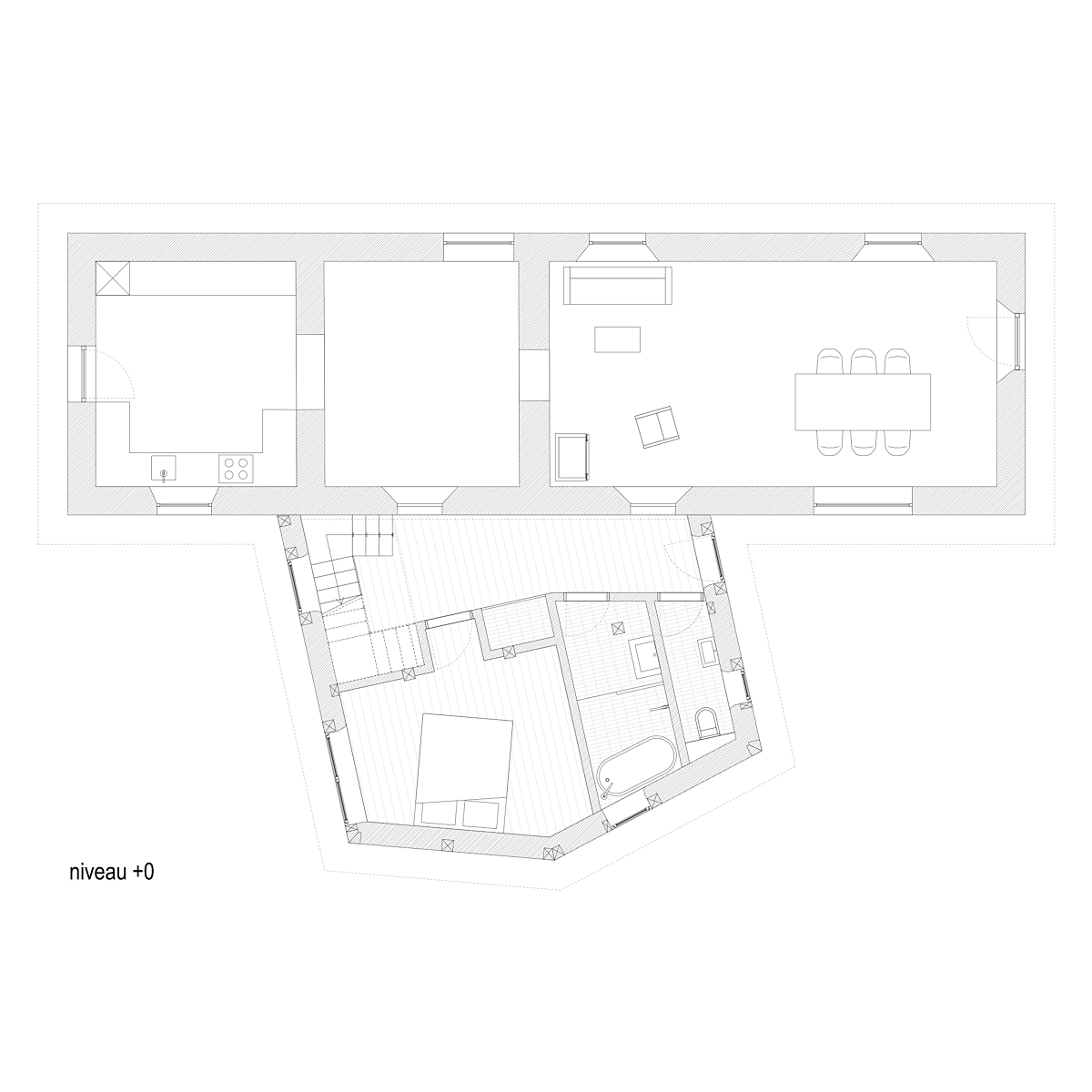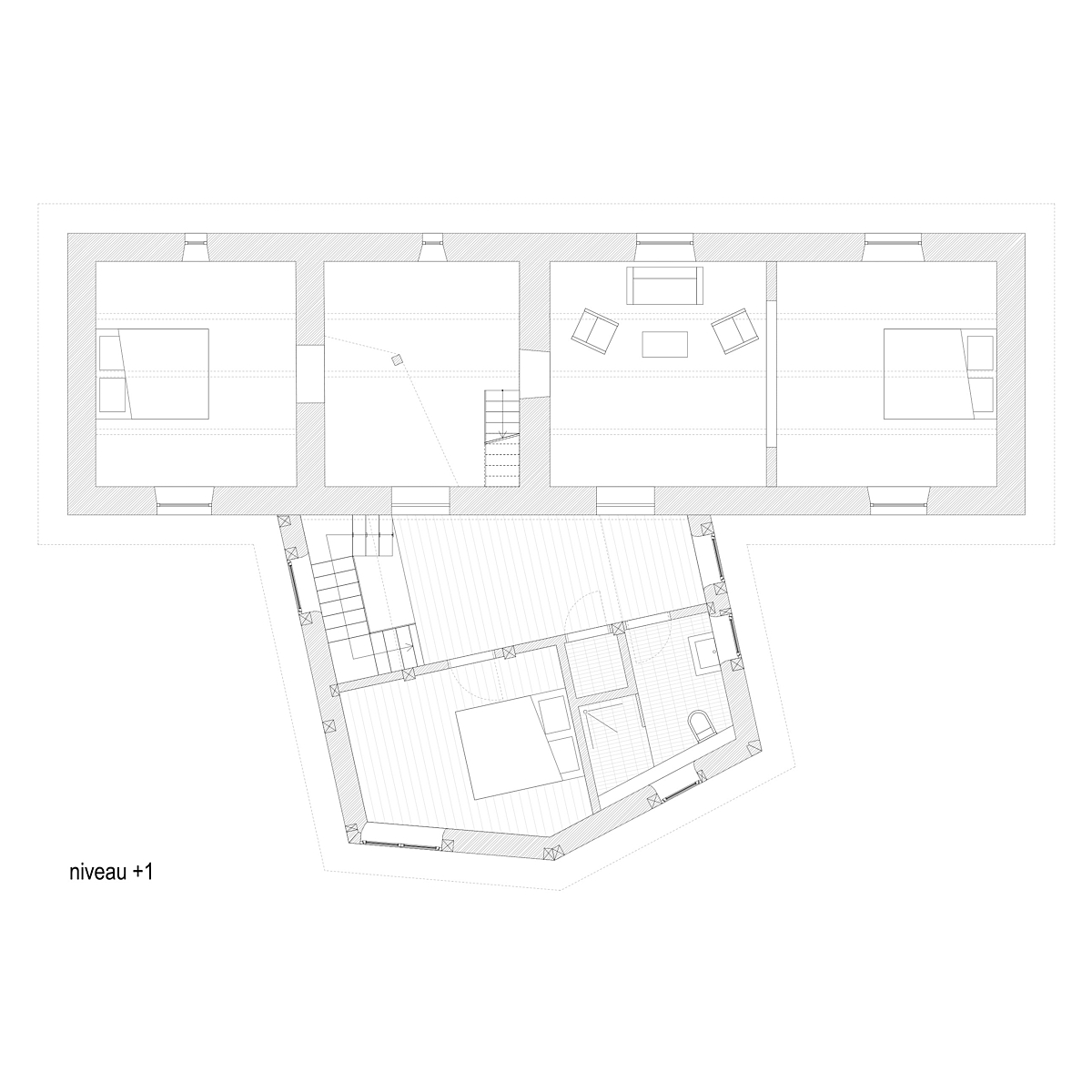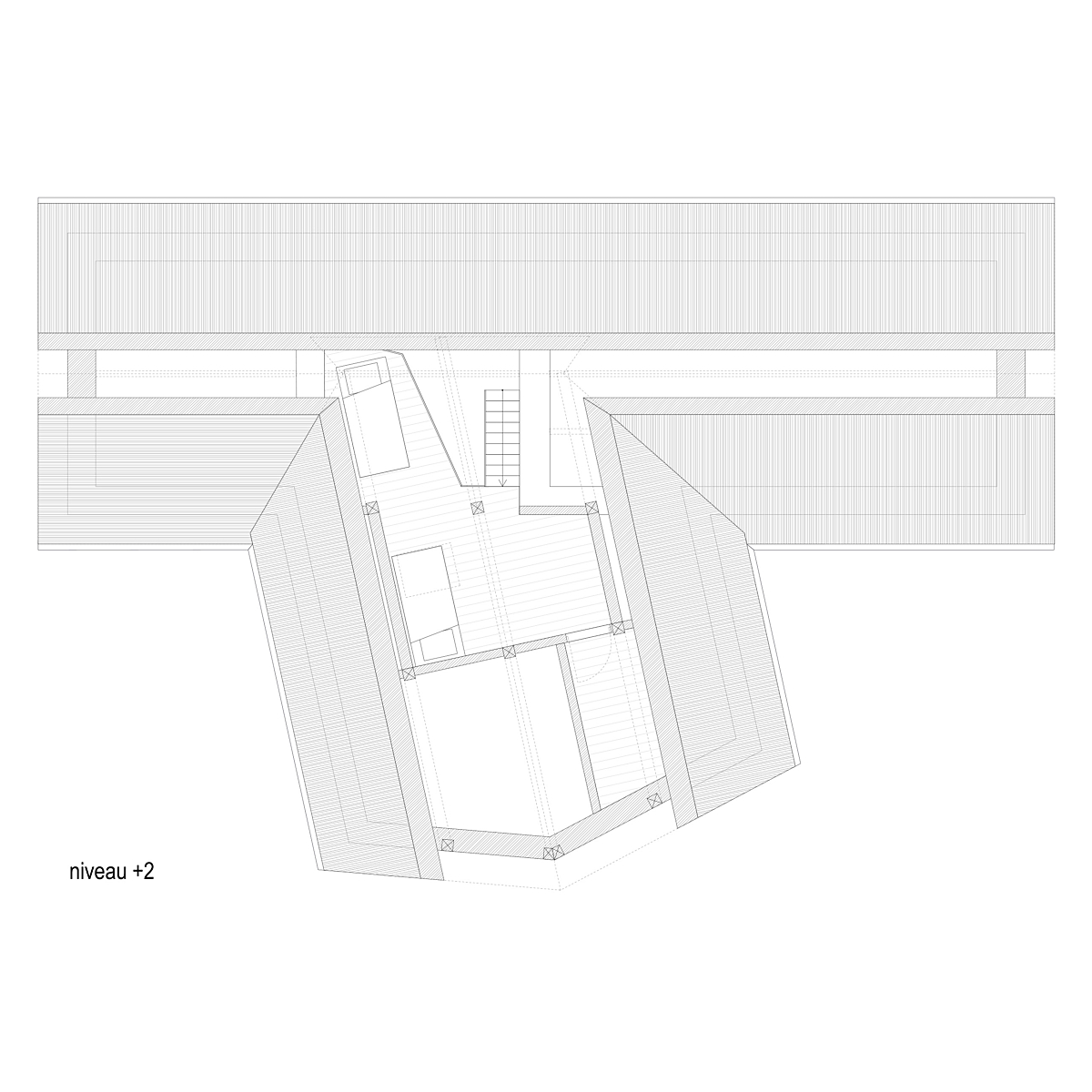Extension and reconversion of an early 20th century miner’s building in the Pyrenees
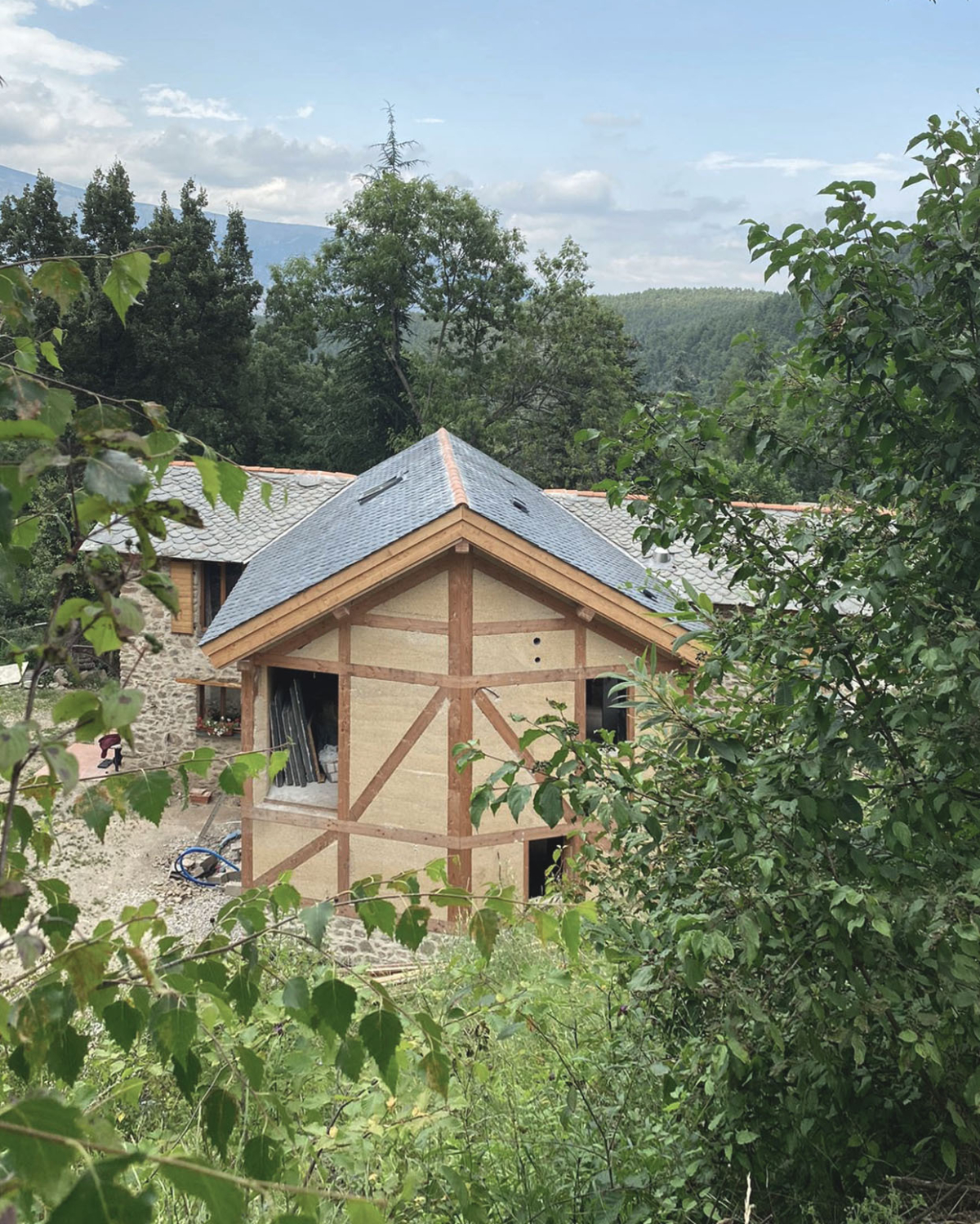
NL (english below)
De uitbreiding en reconversie van een vroeg 20e-eeuwse mijnwerkersgebouwtje tot een gastenhuis met vele schakelruimtes en slaapplaatsen leidde tot een onderzoek naar het herlezen van traditionele constructietechnieken. Het plan heeft vijf hoge kamers met duplexen en alkoven en biedt zo ruimte aan een vast inwonend gezin, waarrond plaats is voor vele gasten.
De opdrachtgever wilde de uitbreiding zelf bouwen met lokale vakmensen en met vrienden. Dit wordt mogelijk gemaakt door een uitwendige vakwerkstructuur die opgevuld wordt met kalkhennep. Wanden en vloeren worden verder afgewerkt met kalkpleister (buiten), leempleister (binnen) en lagen klei en gips. Gelegen op een bergflank is de onderste verdieping van de uitbreiding deels ingegraven, zodat het via een schelplaag in nauw contact staat met de bodem, waardoor het binnenklimaat stabiel blijft, koel in de zomer en warm in de winter. Met minimale energieopwekking via een houtkachel met warme luchtcirculatie wordt ook de extreme koude buiten gehouden.
Dit huis onderzoekt de mogelijkheden om voorbij het romantiseren van ambachtelijkheid in te zetten op het vereenvoudigen van details en het weer dichter bij elkaar brengen van techniek en materiaal. Het is een denkoefening in logisch en economisch bouwen die industrialisering, technologisering en epb-regelgeving in vraag wil stellen.
Enerzijds is er het herlezen van een traditionele 'structure à colombage’, die een nieuwe esthetiek van duurzaamheid uitdraagt. Gelamelleerd hout wordt geassembleerd met enkel zwaluwstaartverbindingen.
Anderzijds zet het project met materialen als kalkhennep, klei en leem in op technieken die mits enkele uren bijscholing kwalitatieve zelfbouw mogelijk maken. Met deze materialen ademt het huis zodat onnatuurlijke verluchting niet nodig is, en reageert het via inertie op natuurlijke wijze op het ruige klimaat van de Pyreneeën.
ENG
The extension and reconversion of an early 20th century miner's building into a guesthouse with many in between rooms and sleeping quarters led to an investigation into the reinterpretation of traditional construction techniques. The plan has five high rooms with duplexes and alcoves, providing space for a permanent resident family, where around there is room for many guests.
The client wanted to build the extension themselves with local craftsmen and with friends. This is made possible by an external timber frame structure that is filled with hemp. Walls and floors are further finished with chalk plaster (outside), loam plaster (inside) and layers of clay and gypsum. Located on a mountain flank, the lower storey of the extension is partly buried so that it is in close contact with the ground via a shell layer, keeping the indoor climate stable, cool in summer and warm in winter. With minimal energy generation via a wood-burning stove with warm air circulation, even the extreme cold is kept out.
This house explores the possibilities of moving beyond the romanticisation of craftsmanship to the simplification of details and the reconciliation of technique and material. It is an exercise in logical and economic building that seeks to question industrialisation, technologisation and epb regulations.
On the one hand, there is the reinterpretation of a traditional 'structure à colombage', which conveys a new aesthetic of sustainability. Laminated wood is assembled with dovetail joints only.
On the other hand, with materials such as hemp, clay and loam, the project focuses on techniques that, with a few hours of further training, makes high-quality self-made building possible. With these materials, the house breathes so that unnatural ventilation is not necessary and it responds naturally to the harsh climate of the Pyrenees through inertia.
- Status: under construction
